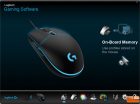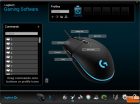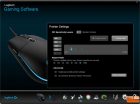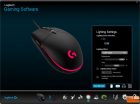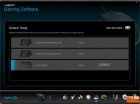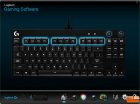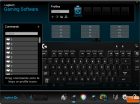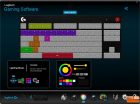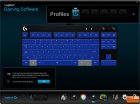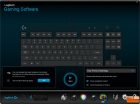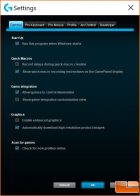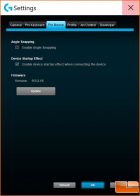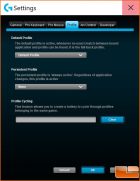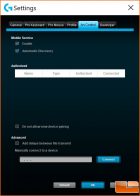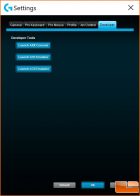Logitech G Pro Gaming Mouse and Keyboard Review
Logitech Gaming Software
As with any peripheral with lighting and programmability options, Logitech has their own software that lets the user configure the devices to their personal preferences. One of the nice things about the Logitech Gaming Software (LGS), which is at version 8.94.104 as of this writing, is that it can control multiple devices seamlessly as well as sync lighting across devices. The other great thing that I found out quickly is how easy to use and intuitive it is. It offers a plethora of options for both the mouse and keyboard and if you want to see the nuts and bolts of everything, check out Logitech’s Gaming Software site as I’ll only be touching on it at a high level.
For the Pro G Gaming Mouse, the home screen simply shows the device currently selected as you can see in the bottom left, both devices are listed. The next tab is where you can program the functionality of each button and do things like assign macros and such. The process is pretty straightforward and allows for various profiles to be created and saved for later use. The next screen is where the pointer settings reside and the preset DPI settings can be altered to the user’s liking. One of the nice features I liked about this was you can actually change the number of available DPI selections accessed through the button from one to five. This comes in handy as there’s no dedicated sniper button on the mouse so setting it for only two presets – a normal DPI and a super low sensitivity one, makes the DPI switcher button act like a sniper button toggle. Next up is the lighting setting which, again, is pretty straightforward and has some thoughtful features like having a sleep timer and a button for color syncing all of the attached Logitech devices that support it. Of course, no mouse customization software would be complete without a surface tuning/calibration tool which is on the next screen. Finally, the software can perform an analysis of either key press or key duration usage.
On the Pro G Mechanical Gaming Keyboard side of the software, much the same functionality. First the home screen which simply shows the device chosen, then the key mapping/macro screen follows. Like the mouse, you can save various profiles for later recall but it’s important to note here that you can’t just assign macros to any button. Only the function keys (F1-F12) are available for this functionality. Seems limiting but 12 keys for programming is still a generous amount. Up next, the RGB lighting which offers quite a few options from preset patterns to the ability to literally choose the color of every key and light (i.e. scroll and caps lock) on the keyboard. The preset animated patterns available are really well done and my favorite by far is the one called ‘datafall’ that’s obviously inspired by the movie The Matrix. All of the keys glow a soft green while select keys light brightly as the pattern somewhat randomly “falls” down the keys a la the coded screens in the The Matrix. If you’ve seen any of the movies, you know exactly what I’m attempting to describe here. Very cool. The next screen allows disabling of certain keys as part of a profile because we’ve all been in the middle of a game and hit the lousy Windows key which kicked us out of the game to Windows desktop, effectively ruining the moment. Finally, the last screen is again a metrics tool allowing the user to tracking the number or duration of keypresses during a specified time frame. On the keyboard, you can actually show the heatmap real-time via the RGB lighting which is interesting.
Also in the software is the ability to install Overwolf, which after install you can come here for various skins, apps, utilities, chats, along with a method for capturing/streaming gaming content. Clicking on the gear icon brings up the overall settings screen where you set things like allowing the LGS to start when Windows does, do firmware updates, set profile parameters, configure Arx Control for mobile connectivity, and access developer tools. Really, there are a ton of features and nuances I didn’t even address but I came away very impressed with the tool overall and how it easy it was to use.

